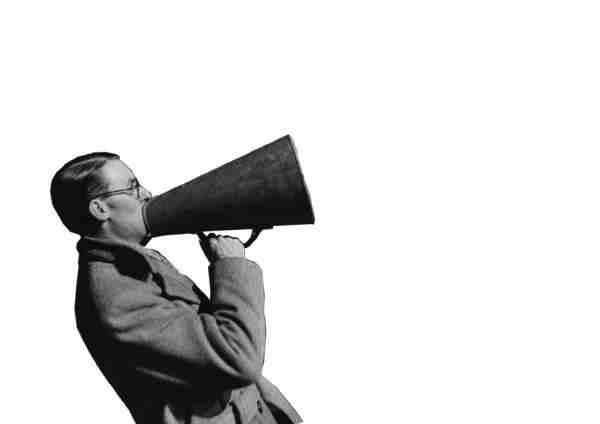Develop your vocal range
Your voice is a powerful part of your presentation and public speaking tool kit. As you listen to lots of people you will notice just how much variation there is in the human voice.
I have noticed that many presenters have fallen into the trap of using only a tiny fraction of their vocal range and thus limit their ability to impact and inspire their audience. Think about it. You can vary a number of different vocal qualities independently including ;
- Volume
- Speed
- Tone
- Rhythm
How much of your vocal range do you currently use? Are you even aware of the full extent of your range? The only way to learn is to practice it.
Imagine that you were having to get your message across in a football stadium without any amplification. How loud would you have to speak to have a chance of being heard?
If you have developed a naturally quiet voice, you may think that you don’t have the ability to project to fill a large room. You would be wrong however.
You just haven’t learned to use the full capacity of your lungs, vocal cords and resonating chambers. One tip is to concisouly notice where you are directing your voice. If you direct it towards the soft palate at the back of your throat much of your power will be absored by the soft tissue and your volume will be low. Now try projecting your voice into the front of your mouth and your teeth. Here the surface is much harder and the sound will bounce of rather than be absorbed, allowing you to speak much more loudly without straining your voice.





Gavin is absolutely correct about focusing the vocal, vibrations towards the front of the mouth. Actually, you can send the vibrations into the front part of the hard palate and into the mask of the face, including the cheekbones, forehead and nose bones. When you can fill the front of the mask of the face with vibration, your voice is amplified naturally, gets louder and projects to a larger audience. It also gets more resonant and beautiful.
Try sounding a HELLOOOOOO and feel how the vocal vibrations can be focused forward. Then stretch your face forward like a fish face and do the same HELLOOOOO. Now you will really feel them filling the mask of your face.
I am a Lessac Voice Method teacher for 37 years. I teach speakers and presenters to use their voices the way that actors learn so they have rich and resonant voices that project. Arthur Lessac said, “Don’t envy a great voice, have one!” And he set out to teach the actors in America to have great voices.
Thanks Gavin for making your readers aware that voice is an important aspect of speaking that can actually be trained easily. If anyone is seeking a speaking voice teacher, I might be the right one.
Sandra Zimmer
http://www.self-expression.com
Tanks for sharing Sandra. It’s great to get the advice of a specialist voice coach such as yourself. Would you be prepared to write or share a guest post with more tips. In particular exercises for people who tend to speak quietly and who struggle to punch up the volume would be a popular topic.
I have read a few of the articles on your website now, and I really like your style of blogging. I added it to my favorites web page list and will be checking back soon. Please check out my site as well and let me know what you think.
Hi,
Enjoyed reading your article. My friend Suzann Rye has an online training program on voice training which I found useful.
Check out http://www.suzannrye.com
Best
Tara